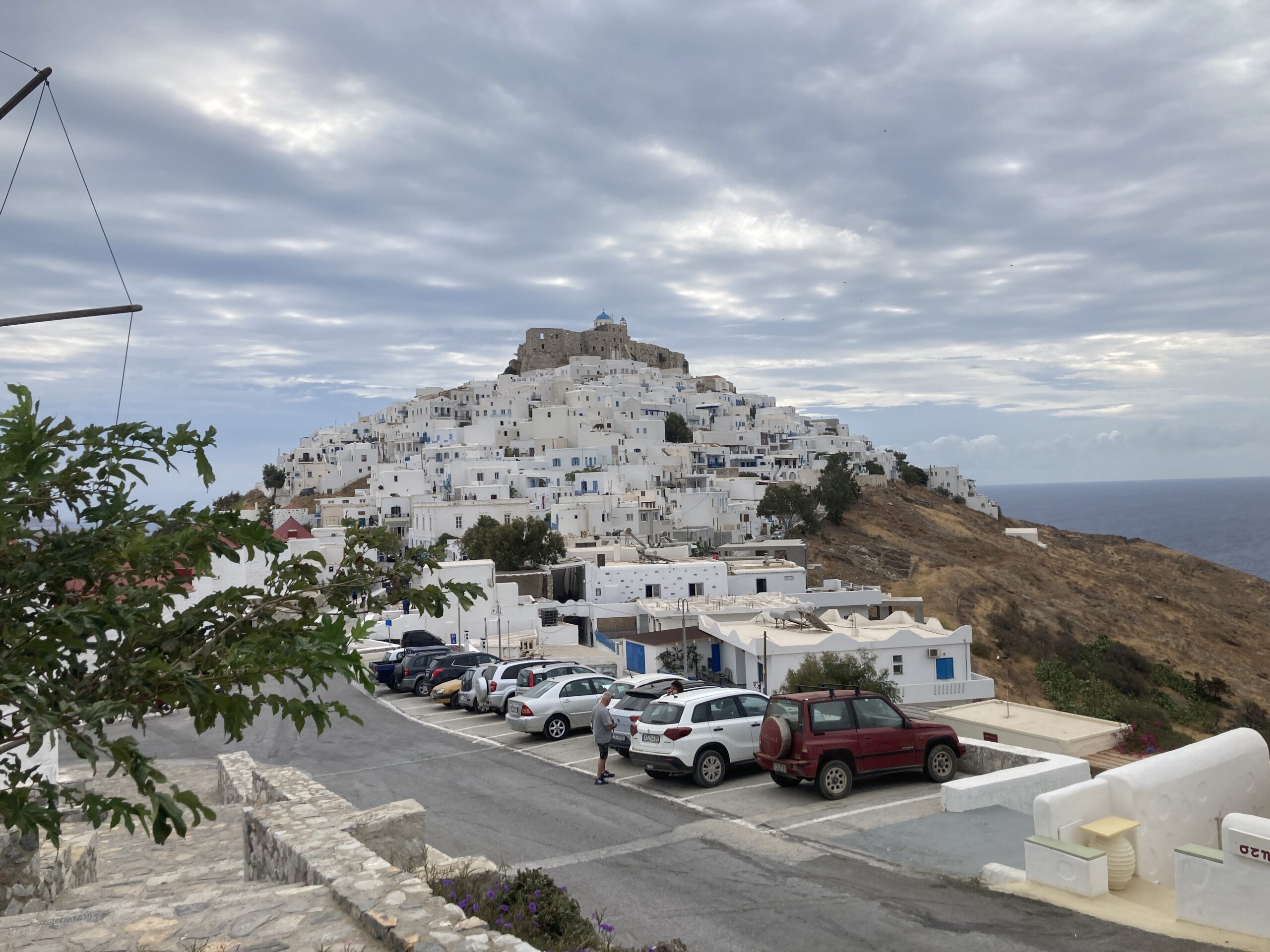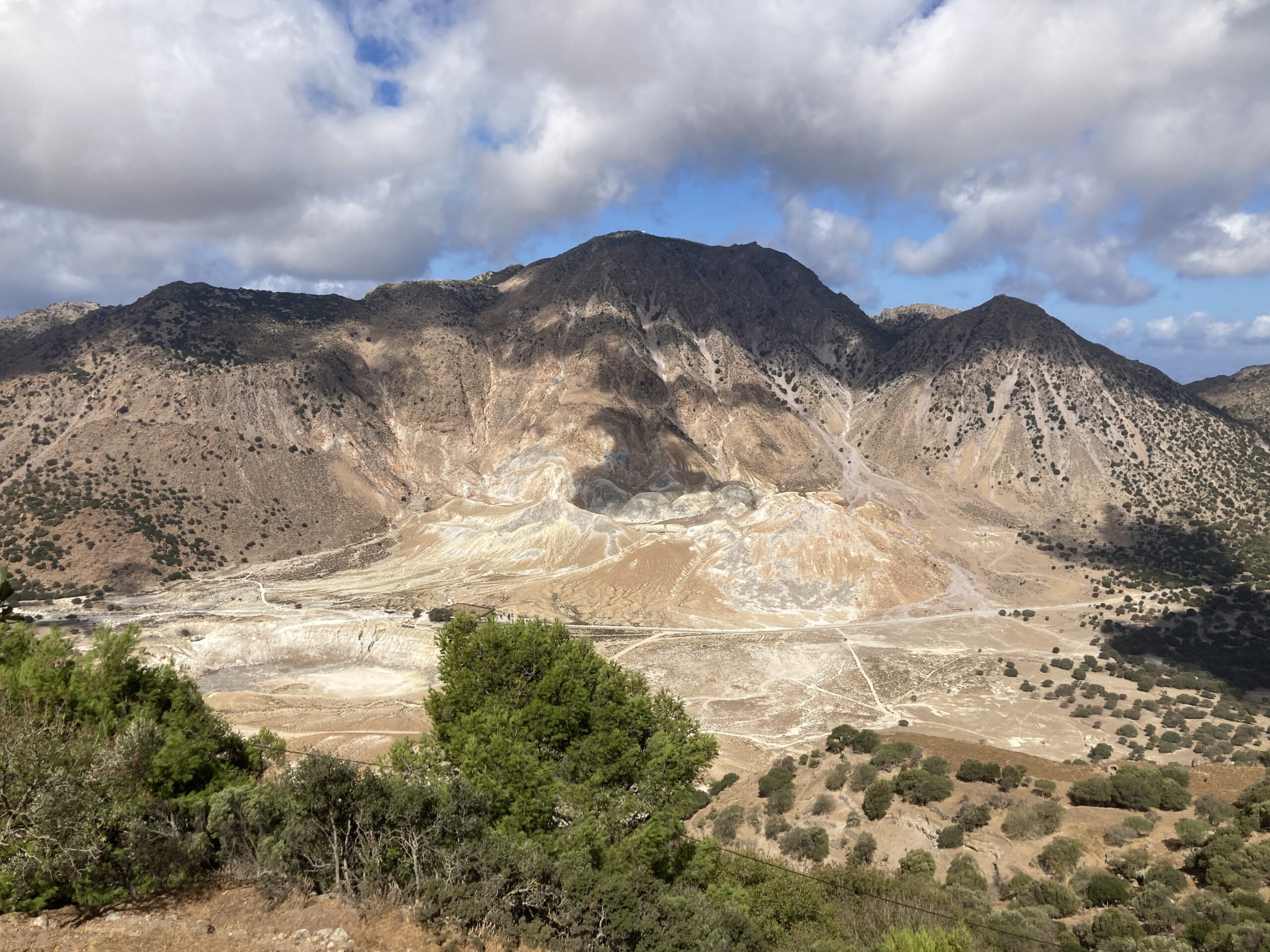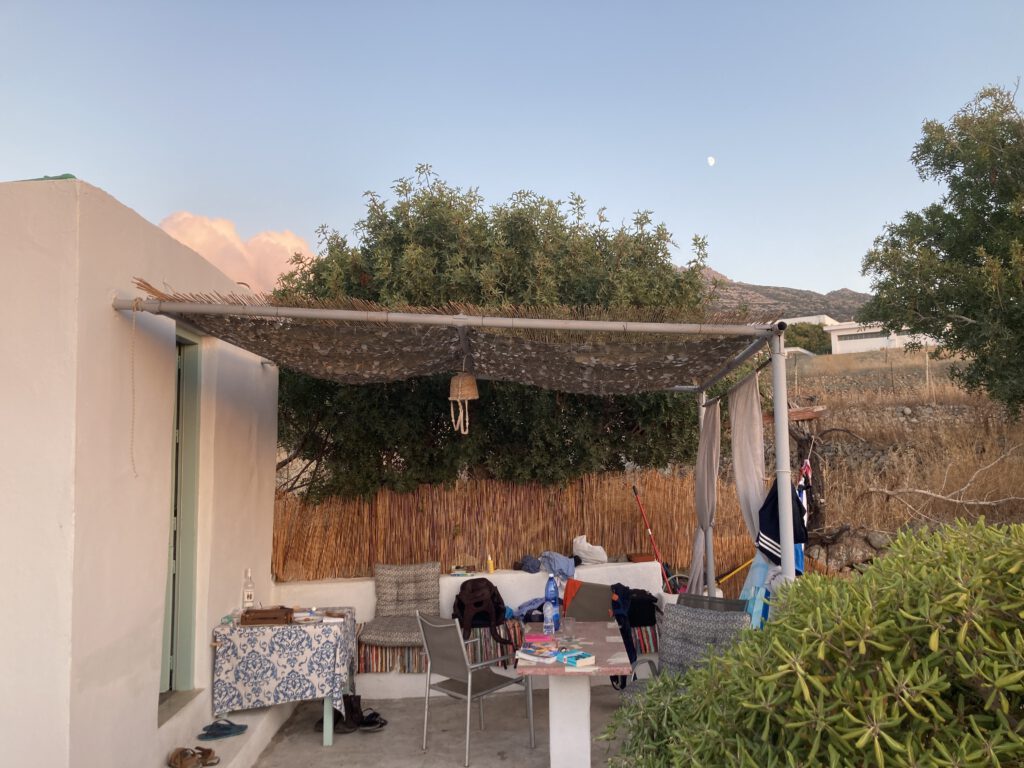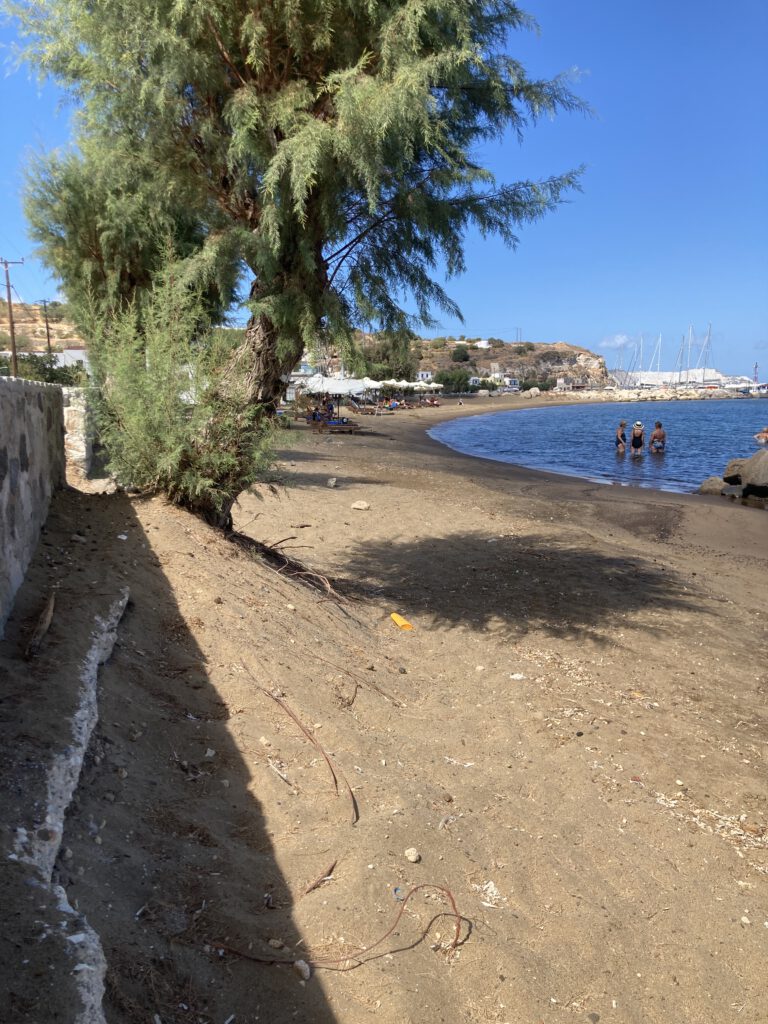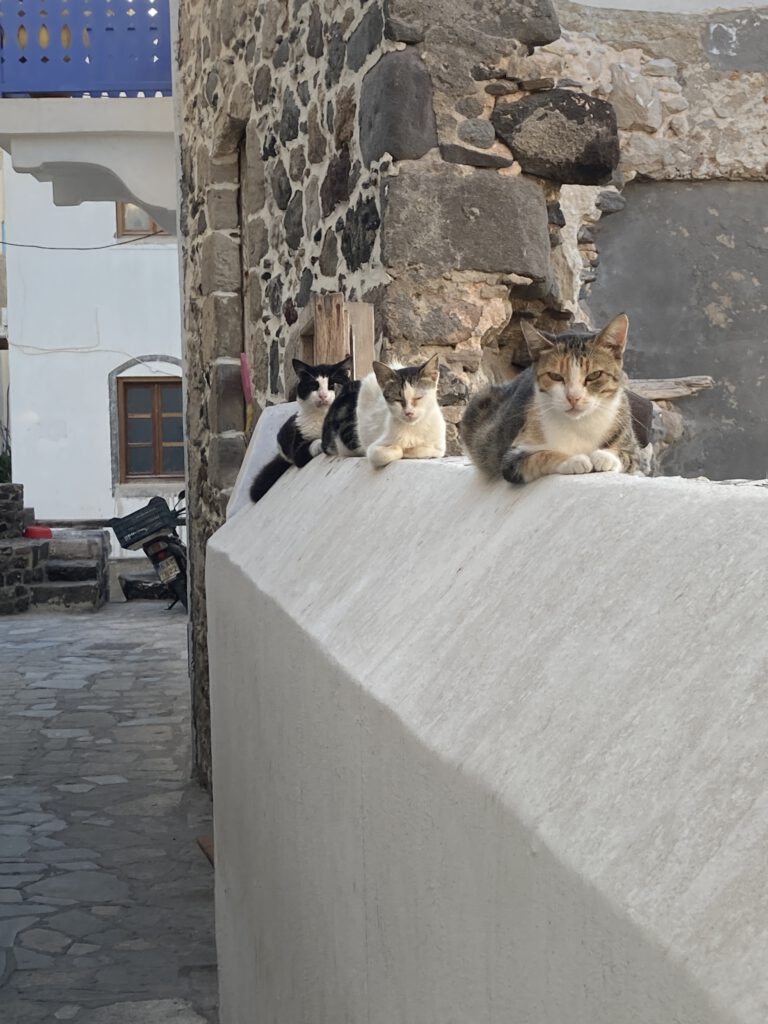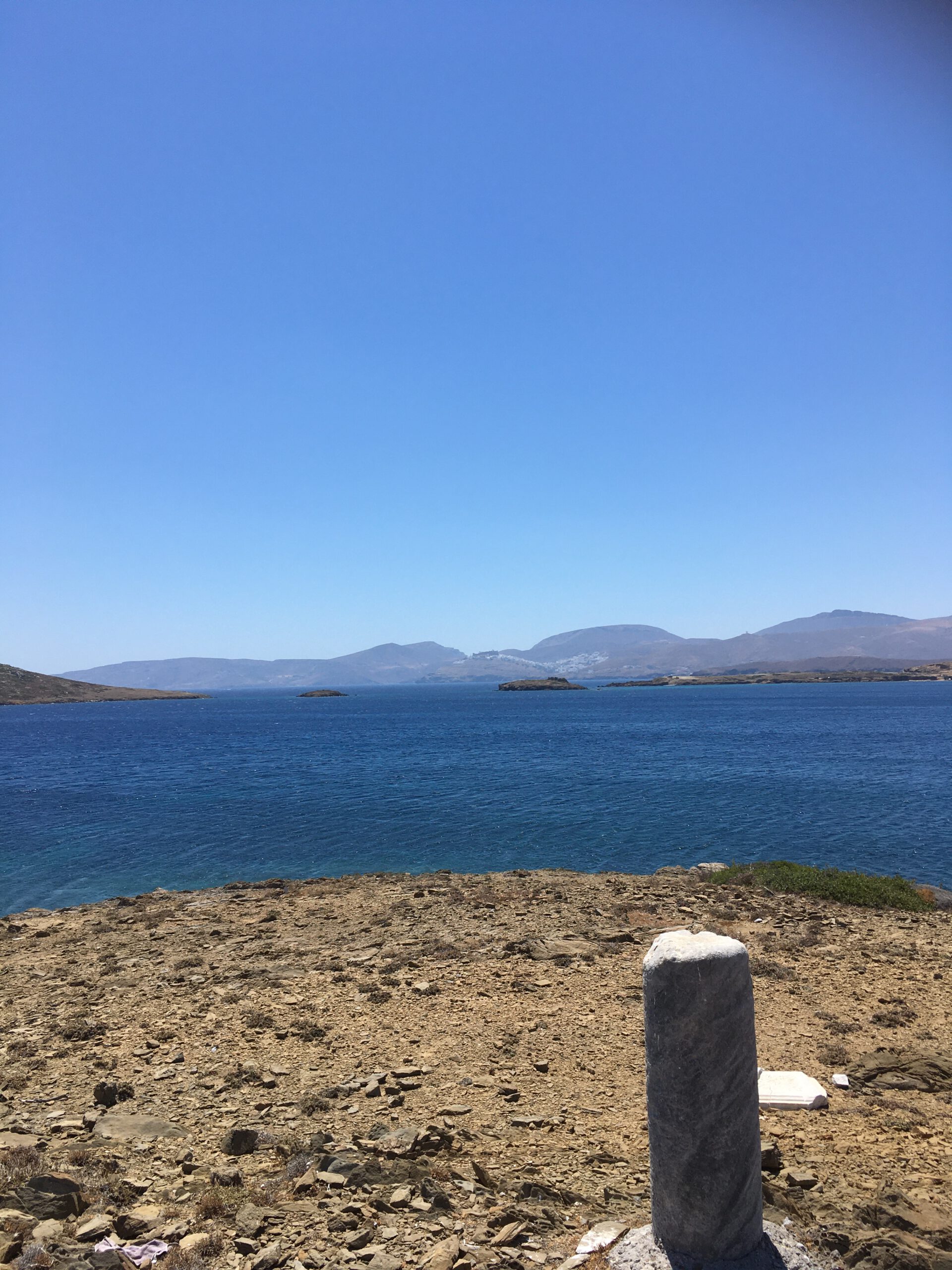Hier geht es zur deutschen Fassung.
Astypalaia was a bit different this time, one month before we came to visit my friend Nikolas had died, which we didn’t know when his son came to pick us up from the harbour. He told us on the way to Livadi, while we were driving up, up, up the winding main road, that Nikolas had died in hospital in Athens and was now history. I had know Nikolas since 1995, when I first came to visit the island. He was waiting beside his blue, beaten up old motor-tricycle for tourists to come off the ferry, inviting us to his place, rooms, in Livadi. I was a novice to Greece and suspicious. Could this man be trusted? But after the heat and the terribly hard earth and the noise of the camping ground on Kos (now defunct), a room for not much more money sounded very appealing. Even though he could only take the backpacks, there wasn’t room for us on the tricycle, we had to walk, first up to Chora, then down again to Livadi. Very easy, not far. Yes, Nikolas, and very steep too, for pampered German legs, but you were right my friend, I was 23 years old, why shouldn’t I walk a bit. The poor Greeks had to walk and work the steep hot dry hills for many times, many centuries. Now I am past 50 and should walk a lot more, if I want to live as long as Nikolas had done. Anyway, we came to Anixi. Of course everyone was still very sad. Especially their daughter. Their grief made me sad too. I felt guilty, that I hadn’t visited Astypalaia more in the last 40 years, although this was my 14th visit, far more than to any other island, and that I hadn’t talked more to Nikolas. But sometimes sitting beside him and drinking a sweet hot coffee was also nice. He was such a lovely man, a true Xenophilos. Yet he could be strict. I don’t think he approved of my drinking and smoking, doing nothing like that himself, on the other hand he always said, it’s your holiday, enjoy. And then I felt a bit bad, because he probably thought I worked as much as he did at home, which I doubt. Nikolas, my friend…
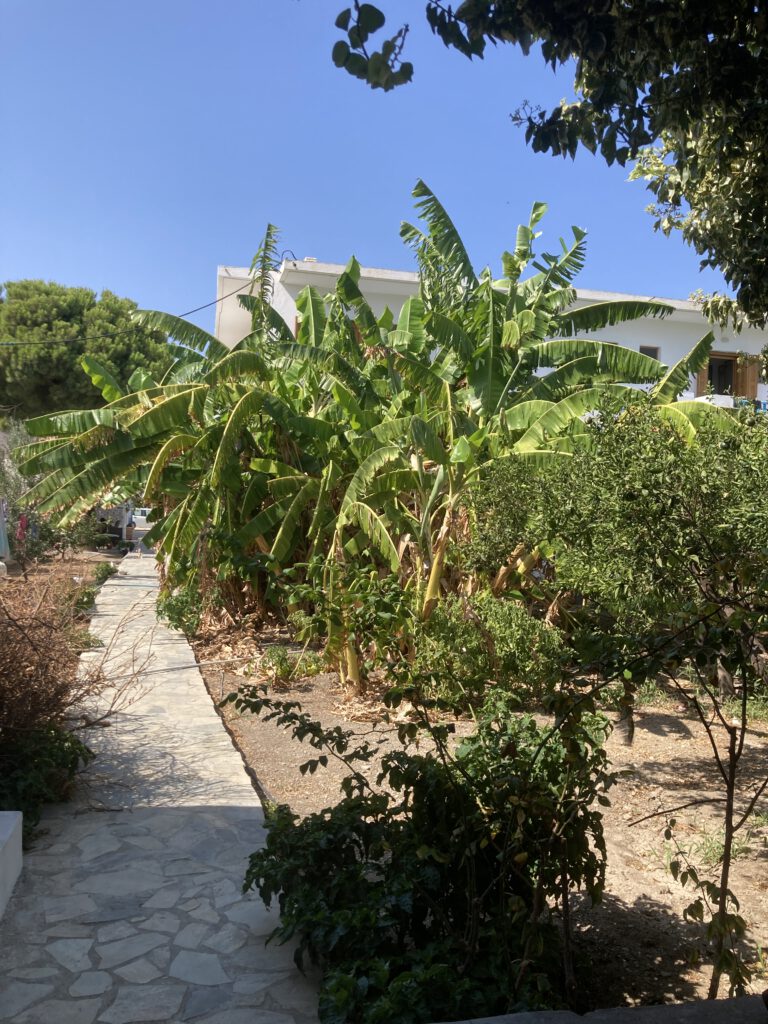
Livadi with its beach and tavernas and two supermarkets is always my favourite place on Astypalaia. And when, after hard hours reading on the beach and swimming and snorkelling, you return through the meandering dry riverbed, about a ten minute walk, to Anixi, that is probably one of the nicest feelings and places you can get to in this imperfect world, the languid tiredness of the sun and sea kissed limbs, the plastic bags full of drinks and cheese and crisps and other good things pulling down, the anticipation of shower and rest… of course nowadays, that I am a bit heavier and old, the smart young men from the supermarket bring the heavy stuff and water with their motorbikes. How long you stay? How are you? Astypalaia always good. Cheese from the island? Only in spring, my friend.
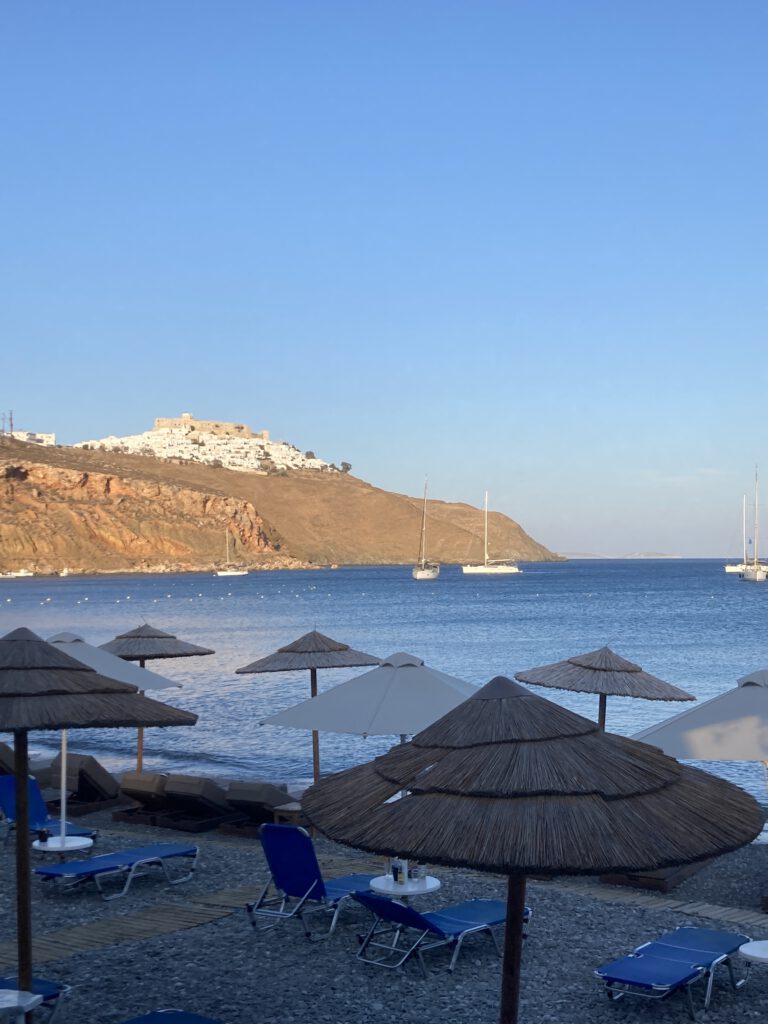
I guess my second favourite beach is Agios Konstantinos, about a hot one and a half hour walk from Livadi. First you go up up up, then along the plateau, where there are actually a few fields and also goats and honey bees, fantastic views of Chora and the Castro, and then down into the valley. An old guide book says pomegranate tree, but I’ve never seen any. There is a small, very friendly tavern, also a beach bar now (a shame perhaps, yes, but we have to move with the times, old timer, don’t we?), tamarisks and Konstantinos’ church. The beach can be quite windy, great snorkelling though, bring beach shoes, it is pebbles and bigger stones.

Every time I go to Astypalaia I have to go up to the Castro, the old fortification of the Querini family from Venice who ruled the island from… who really cares. It is quite a bit sweat inducing and leaving you breathless, even before the stunning views, to climb up through the winding streets of Chora and its white cubic houses. I always look for one house I like and say, I am going to buy it. Next year maybe. You walk through the thick and whitened gate into the Castro where there is not much happening in the way of proposed renewal and renovation since 1995. Maybe it’s the ghosts who are supposed to haunt the place since the big earth quake in the 50s when folks left the small houses inside the Castro to move down to Skala (Stairs) and Limani (harbour). In Chora there is a small and pretty kafeneion with a very windy balcony, taken over now by young people who know everything better, with their fancy scrambled eggs and coffees, where before you got a bottle of retsina and with it a small plate with sour apple chunks, delicious. I guess I will have to get used to it. And I am not sad, because I am sure some things and feelings and gods in Greece will never die.
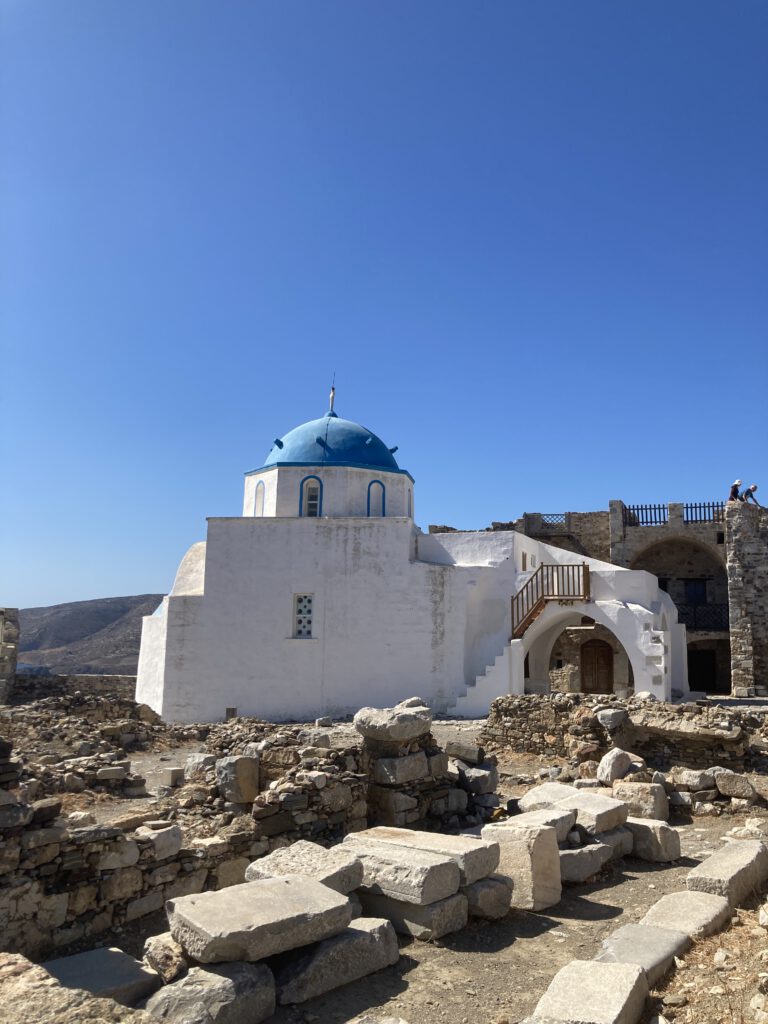
Best restaurant in Livadi: To Gerani (the garden), best supermarket: both are good, best place to stay: To Anixi (the spring), of course.
